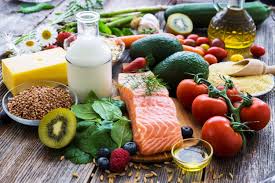Eight Ways To Eat Healthier – When you start learning more about nutrition, it can seem overwhelming. For people who are interested, there is definitely a lot to learn and explore, but, in the end, basic nutrition is quite simple. It’s so simple, in fact, that we know you can eat better by focusing on these eight things.
1. FOCUS ON REAL FOOD
We mean real food as opposed to processed food. Real food is fruits, vegetables, meats, dairy, seafood, nuts, seeds, whole grains, and beans. Natural sweeteners, coffee, chocolate and wine count, too — just in moderation. Avoid food that is mass-produced, emulsified (where water and oil don’t separate) or shelf-stable. Eating real food leads to eating more nutrient-rich food without much effort.
2. OPT FOR COMPLEX CARBS
When it comes to carbs, the more natural and whole, the better. Go for complex carbs like 100% whole-grain bread and pasta, brown rice, starchy vegetables, legumes, nuts, seeds, low-fat dairy and plenty of fruits and vegetables. Limit simple sugars from refined grains, processed snack foods, sweets and sugar-sweetened beverages.
3. ENJOY LEAN PROTEIN
It’s perfectly OK to indulge in breakfast sausage and cheeseburgers on occasion. But on an everyday basis, there are plenty of great lean proteins to choose from. Some good meat-free options include beans, peas, quinoa, lentils, tofu, low-fat yogurt and 1% milk. Fish is another great source of protein that can also be rich in healthy omega-3s. As far as meat goes, cuts that have round, chuck or loin in the name are usually leanest, along with chicken and turkey breast.
4. CONSUME HEALTHY FATS
Add avocados, nuts and nut butter, seeds and fatty fish like salmon into your weekly menu. Cook with healthy oils like olive or grapeseed instead of butter or lard. Make salad dressings with flaxseed oil for a healthy dose of omega-3’s.
5. EAT LOTS OF COLORS
Incorporate colorful foods into every meal — some people call it eating a rainbow. From dark greens to red berries, orange bell peppers and white onions, the colors in fruits, vegetables, and even proteins are associated with important vitamins and minerals. Eating a rainbow of colorful foods, especially fruits and vegetables, is a great way to get a variety of micronutrients in your diet. T
6. BALANCE YOUR PORTIONS
Eat a balance of carbohydrates, proteins, and fats at each meal and choose foods rich in fiber, vitamins, and minerals. A good way to do this is to fill your plate with 3–4 food groups at each meal. Eat a combination of protein-rich foods, whole grains, dairy, fruits and vegetables, and incorporate the groups you miss into other meals and snacks throughout the day. Stick to healthy portions
7. MINIMIZE THE SUGAR
In its natural state, sugar is a relatively harmless — even necessary — carbohydrate our bodies need to function. It’s found in fruits, vegetables, and dairy as the compound fructose or lactose. The problem comes when sugar is added to foods during processing for added flavor, texture or color. Eating too many of these empty calories has many health effects, the most obvious being major weight gain. Added sugar drives your insulin levels up, messes with your metabolism and causes those calories to turn right into belly fat. Sugar goes by many names.
8. CHOOSE SMART SNACKS
Snack time is when processed foods are the easiest to grab. Arm yourself with real food snacks that are as minimally processed as possible





Post a Comment